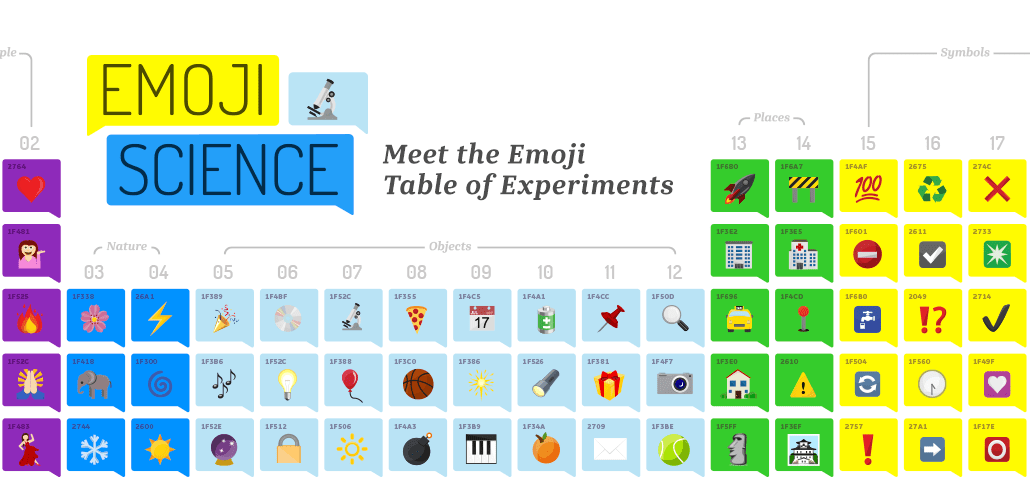
The scene at New York University’s chemistry lab this morning was almost like any other chemistry lab in any other major university. Almost. Aside from the pungent fumes, bubbling test tubes and people shuffling around in white lab coats, the chem lab landscape was dotted with emojis.
In an effort to make science more engaging and relatable to younger students, GE is taking over the NYU laboratory for its #EmojiScience pop-up project. The multinational conglomerate is using Snapchat to send videos of live science experiments to its followers until Friday. The company is also encouraging fans to send their favorite emojis to GE’s Snapchat handle, which will then personally reply with a video experiment that evokes each specific emoji.
For example, a fan that snaps the rocket emoji to GE will receive a 15-second video of a vinegar rocket exploding in return. Or if a fan chooses to send a broken heart emoji to GE, he or she will receive the “Bubble Balloon” experiment, where a heart-shaped balloon is inflated by the reaction between vinegar and baking soda.
As part of the campaign to make science fun, GE has also unveiled a new “Emoji Periodic Table of Experiments,” which categorizes all the emojis in different cohorts, much like the actual periodic table. It’s even roped in a number of self-confessed science fans to help conduct the experiments and be a part of the videos that are sent out to its fans, including Bill Nye (The Science Guy,) Jessica Williams from The Daily Show and do-it-yourself blogger Erica Domesek.
“We’re always looking for ways to celebrate science and inspire through science,” Sydney Lestrud, the global digital media manager at GE, told Digiday. “We’ve seen such huge audience growth and engagement on Snapchat, that for us it’s a great platform to continue to experiment with to reach the younger demographic. And who doesn’t love emojis?”
As a brand, GE has been consistently innovating ways to use content on new platforms. Last year, its campaign #6secondscience showed fans how to conduct short experiments on Vine, while it took to Twitter this year for #Springbreakit, where it demonstrated the power of its next generation of “super materials” by crushing and blasting old materials.
The brand has launched a microsite for this campaign, replete with videos of the experiments as well as tutorials, and is also promoting it across its various social channels and blog, using the hashtag #Emojiscience.
“You kind of feel like a kid in a candy store, with all these experiments that use everyday ingredients to bring these emojis to life,” said Domesek, who personally performed a few experiments that were circulated on Snapchat. “I think it’s really cool to take the digital to the physical, and then take it to the digital again.”

More in Marketing

After watching X’s ownership issues play out, marketers brace for TikTok whiplash in 2026
TikTok’s ownership drama has echoes of X (formerly Twitter), but ad performance has kept marketers for fleeing—for now.

‘There’s no room for purists’: Generative AI is altering the agency junior talent search
AI is altering agency business models. It’s altering the skills they’re hiring for and where they’re hiring them from, too.

For platforms, here’s what’s not going to happen in 2026
Rather than the traditional platform predictions, this is a list of what Digiday believes won’t happen next year.





